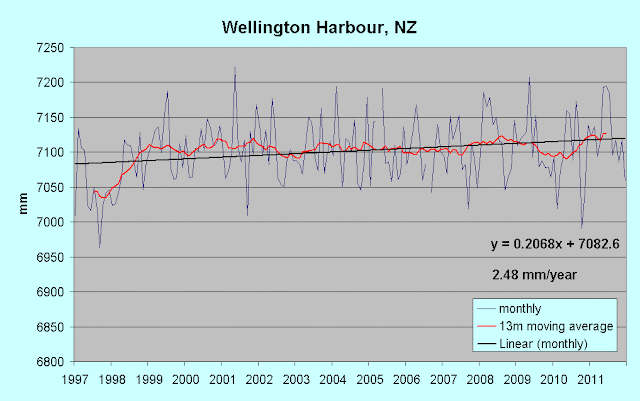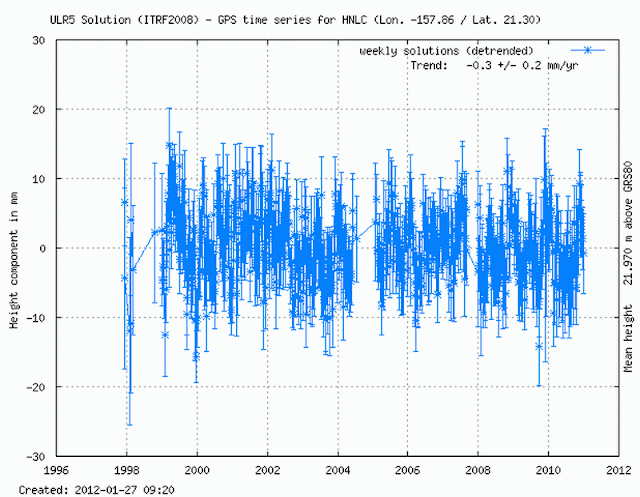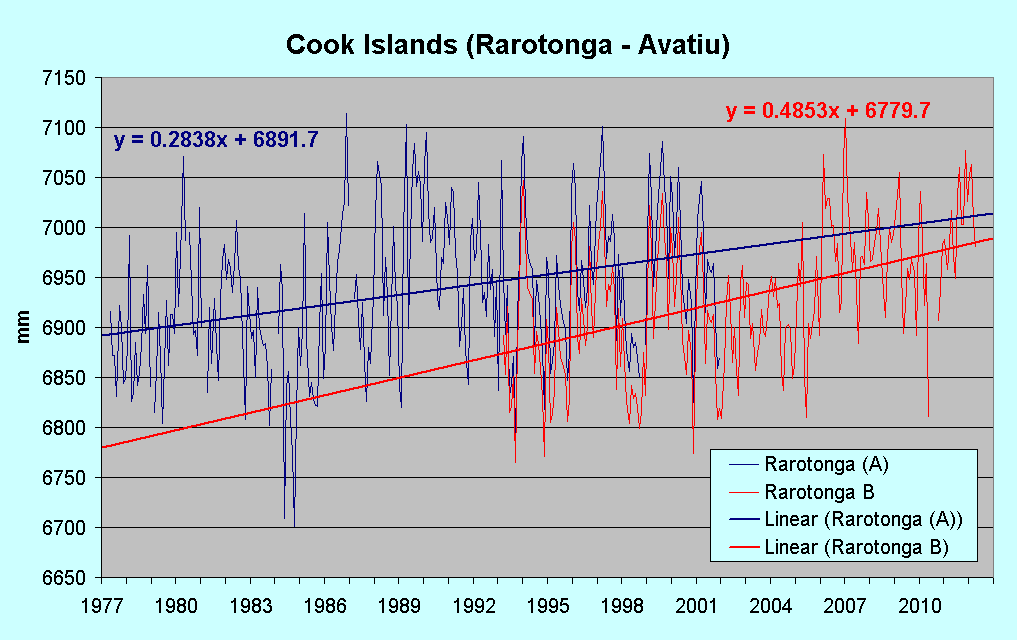The question might be expanded to ask "does anyone"? I ask it because it's taken me about 8 years to get my head around all (or at least most of) the subtleties of detail, and while I've been doing that, my realisation has grown that many, including scientists, technical authors, and well-respected bloggers, do not understand some of the basics, or at least give that impression in what they say and write. Even the authors of IPCC AR3 seem somewhat confused. Pure arrogance on my part you might think, but hear me out before you write me off or label me in some way I'd rather not know.
There's one concept expressed in many descriptions of the greenhouse theory; pet theories, objections and rebuttals are based on it, calculations of parameters are formulated using it. The concept is formed using mere words, but some people's minds have been so seduced by those words that they believe, are convinced even, that the concept in some way reflects physical reality. It does not; it's a chimera, the "Emperor's New Clothes".
The concept is this: the "effective emission temperature" of the combined Earth/atmosphere system. It leads to a major misunderstanding in the claimed magnitude of the greenhouse effect (GHE), that the Earth is some 33°C warmer as a result of the effect of greenhouse gases in the atmosphere. To understand how the misunderstanding arose, it's worth quoting IPCC AR3 WG1, 1.2 Natural Climate Variations 1.2.1 Natural Forcing of the Climate System
For a stable climate, a balance is required between incoming solar radiation and the outgoing radiation emitted by the climate system. Therefore the climate system itself must radiate on average 235 W/m² back into space. Details of this energy balance can be seen in Figure 1.2, which shows on the left hand side what happens with the incoming solar radiation, and on the right hand side how the atmosphere emits the outgoing infrared radiation. Any physical object radiates energy of an amount and at wavelengths typical for the temperature of the object: at higher temperatures more energy is radiated at shorter wavelengths. For the Earth to radiate 235 W/m², it should radiate at an effective emission temperature of -19°C with typical wavelengths in the infrared part of the spectrum. This is 33°C lower than the average temperature of 14°C at the Earth's surface. To understand why this is so, one must take into account the radiative properties of the atmosphere in the infrared part of the spectrum. Of the incoming solar radiation, 49% (168 W/m²) is absorbed by the surface. That heat is returned to the atmosphere as sensible heat, as evapotranspiration (latent heat) and as thermal infrared radiation. Most of this radiation is absorbed by the atmosphere, which in turn emits radiation both up and down. The radiation lost to space comes from cloud tops and atmospheric regions much colder than the surface. This causes a greenhouse effect. Source: Kiehl and Trenberth, 1997: Earth's Annual Global Mean Energy Budget, Bull. Am. Met. Soc. 78, 197-208.
 |
| Figure 1.2: The Earth's annual and global mean energy balance. |
The key sentence is this
For the Earth to radiate 235 W/m², it should radiate at an effective emission temperature of -19°C with typical wavelengths in the infrared part of the spectrum. This is 33°C lower than the average temperature of 14°C at the Earth's surface.... and the key word is effective, because the radiation to space is not emitted at an emission temperature of -19°C. Longwave IR radiation to space comes from three sources; from the "cloud tops and atmospheric regions" mentioned above (which are at different temperatures), and also the surface (implied but not explicit in the excerpt), which is at a very different temperature. There are thus three sources, all at different temperatures, radiating different amounts. For the quoted 235 W/m² outgoing flux to be input to the Stefan-Boltzmann equation to derive an emission temperature, it would have to be emitted by a single source, and would have to conform to the envelope of a Planck curve. It is not, and it does not. The "effective emission temperature" has no basis in reality, neither has anything based on it.
Here's a satellite view of longwave IR emitted to space over the western tropical Pacific. The surface at around 22°C or so is a little warmer than the 14 or 15°C (287 or 288°K) taken to be the global average surface temperature, but it illustrates the point well. The dashed lines represent Planck curves for their labelled temperatures in degrees Kelvin. The portion between 25µm and 17µm is emission from water vapour, from 17µm to just over 13µm from carbon dioxide, 13µm to 8µm from the surface (with a "bite" from ozone centred on 9-10µm), and the rest to the right from water vapour. The tiny downward spike over wavenumber 1300 represents methane. Note where a 254°K (-19°C) Planck curve would lie, just below the marked 260°K curve.
 |
| From G.W.Petty "A First Course in Atmospheric Radiation" |
In the absence of an atmosphere there'd be no clouds to reflect incoming solar radiation, no water vapour to absorb much of the solar short-wave infrared, no ozone to absorb ultra-violet. All incident solar radiation (342 W/m² in Figure 1) would reach the surface. If we assume for this thought experiment that the surface would be as it is now (ocean/desert/rock/vegetation/ice), then some of it would be reflected, in the same proportion as shown in the diagram, that is 30/198 x 342 = 52 W/m², leaving 290 W/m² to be absorbed, and therefore to be emitted as radiation to restore the radiative balance. Using the Stefan-Boltzmann Law to calculate the emission temperature, assuming perfect emissivity and that the temperature of space is 2.7°K, results in a surface temperature of -5.5°C, not the -18°C or -19°C almost universally quoted.
Working out what the resulting surface temperature would be if the green house effect were simply "turned off", that is all elements of Earth and atmosphere are present, but GHGs wouldn't absorb or radiate longwave IR, is rather more complicated, and best left for another post, as is a critique of the Kiehl and Trenberth "energy budget" diagram shown in Figure 1.
The 5km mentioned in the title is derived from the adiabatic lapse rate (rate of cooling with height) using the fictional --19°C "effective emission temperature", so it too is a fiction, a fiction created entirely by IPCC authors in AR3 WG1 chapter 1.2:
The natural greenhouse effect
The atmosphere contains several trace gases which absorb and emit infrared radiation. These so-called greenhouse gases absorb infrared radiation, emitted by the Earth's surface, the atmosphere and clouds, except in a transparent part of the spectrum called the "atmospheric window", as shown in Figure 1.2. They emit in turn infrared radiation in all directions including downward to the Earth's surface. Thus greenhouse gases trap heat within the atmosphere. This mechanism is called the natural greenhouse effect. The net result is an upward transfer of infrared radiation from warmer levels near the Earth's surface to colder levels at higher altitudes. The infrared radiation is effectively radiated back into space from an altitude with a temperature of, on average, -19°C, in balance with the incoming radiation, whereas the Earth's surface is kept at a much higher temperature of on average 14°C. This effective emission temperature of -19°C corresponds in mid-latitudes with a height of approximately 5 km. Note that it is essential for the greenhouse effect that the temperature of the lower atmosphere is not constant (isothermal) but decreases with height. The natural greenhouse effect is part of the energy balance of the Earth, as can be seen schematically in Figure 1.2.A fiction built upon a fiction, the "Emperor's New Clothes" are the wrong colour, and the wrong length. Don't get caught admiring them.


























